Abandoned Prototypes
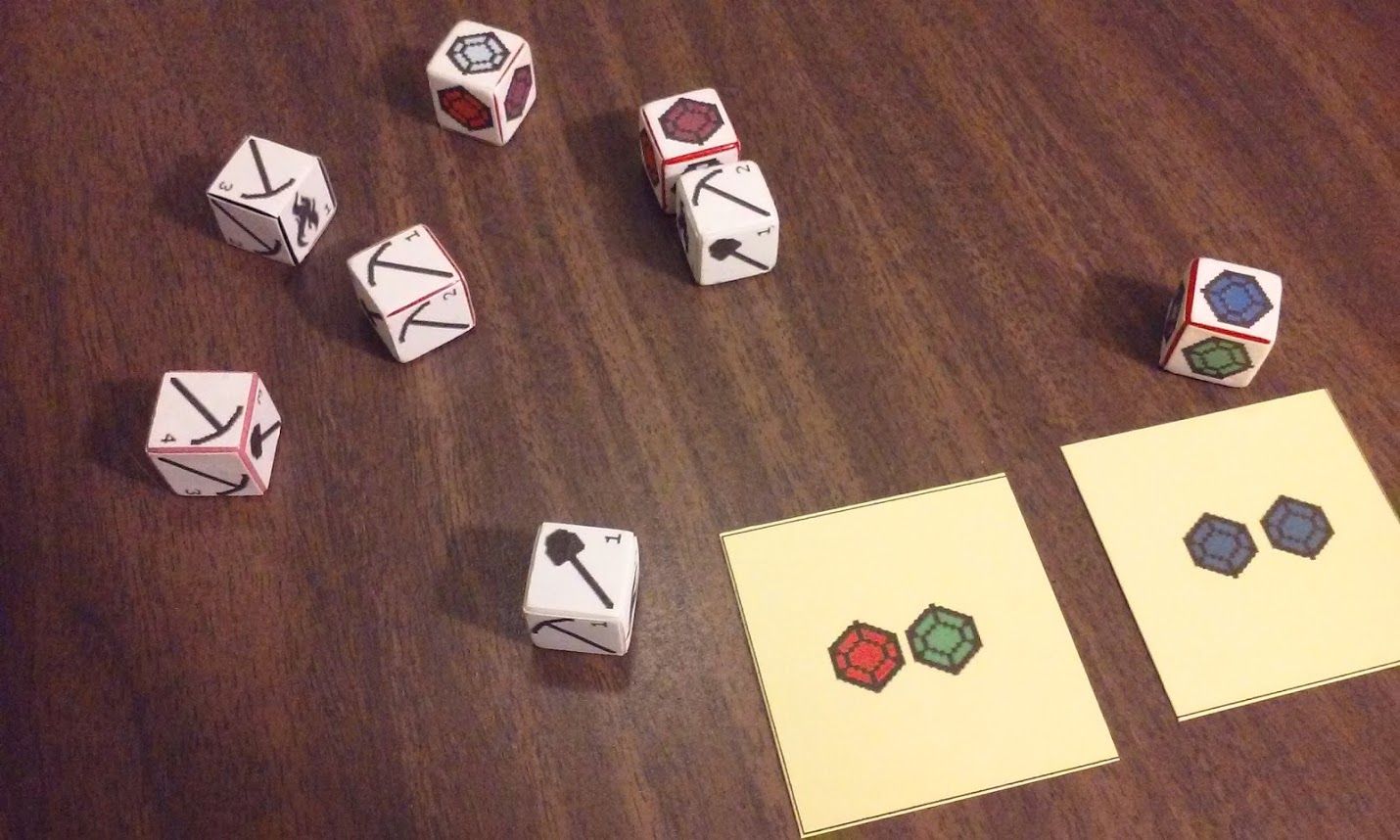
"Success consists of going from failure to failure without loss of enthusiasm." - Winston Churchill
3/4/2017
For those times when you need just a bit more panic in your life.
Posted on 3/11/2017 by Tim Rice
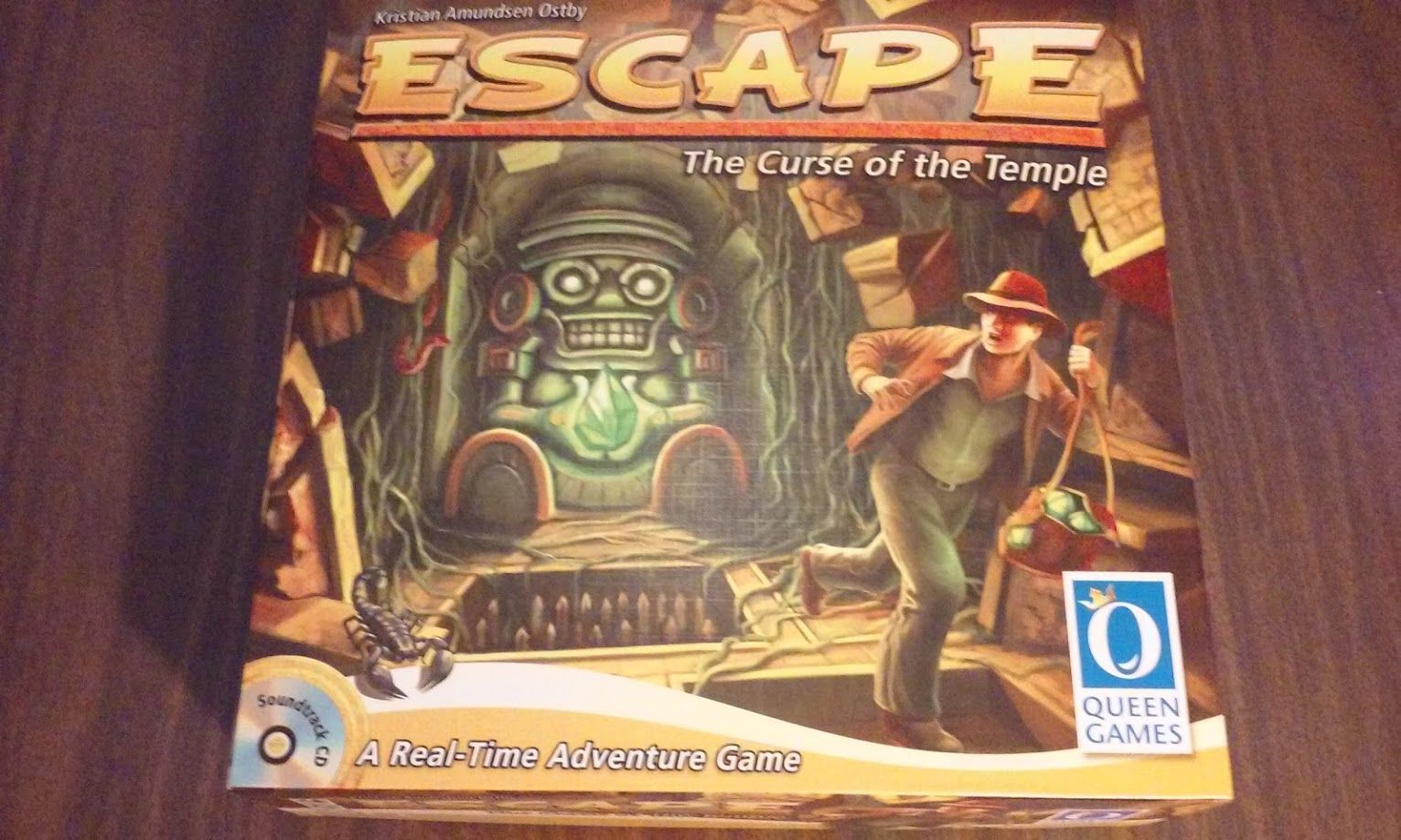
Don’t you hate it when you’re casually strolling through an ancient temple with your friends, and then you accidentally invoke a wicked curse that causes the temple to start crumbling on top of you? Such a pain…
Escape: The Curse of the Temple is a cooperative real-time dice game, and its title is quite self-explanatory. Players take on the role of adventurers attempting to escape from a collapsing temple, and they’ll have to explore chambers, activate crystals, and endure disturbing curses before getting the chance.
One thing that sets this game apart is its soundtrack. That’s right, this game comes with a CD with two different 10-minute soundtracks that not only act as the game's timer, but also add an incredible sense of tension and atmosphere to the experience. The game also only lasts ten minutes. Is a game that short worth playing? Let’s find out.
The game comes with 19 basic chamber tiles (including one starting chamber and one exit chamber), 5 adventurer figures, 25 custom dice, 25 gem tokens, 1 gem depot, and of course the CD.
To set up, each player selects an adventurer and takes five dice. The starting chamber is placed in the middle of the table, and each player places their adventurer there. The rest of the chamber tiles are shuffled into a draw stack, and the exit chamber is then shuffled into the last 5 chambers. Finally, a number of gems are placed into the gem depot depending on the number of players (with more players, you’ll need to activate more gems before escaping).
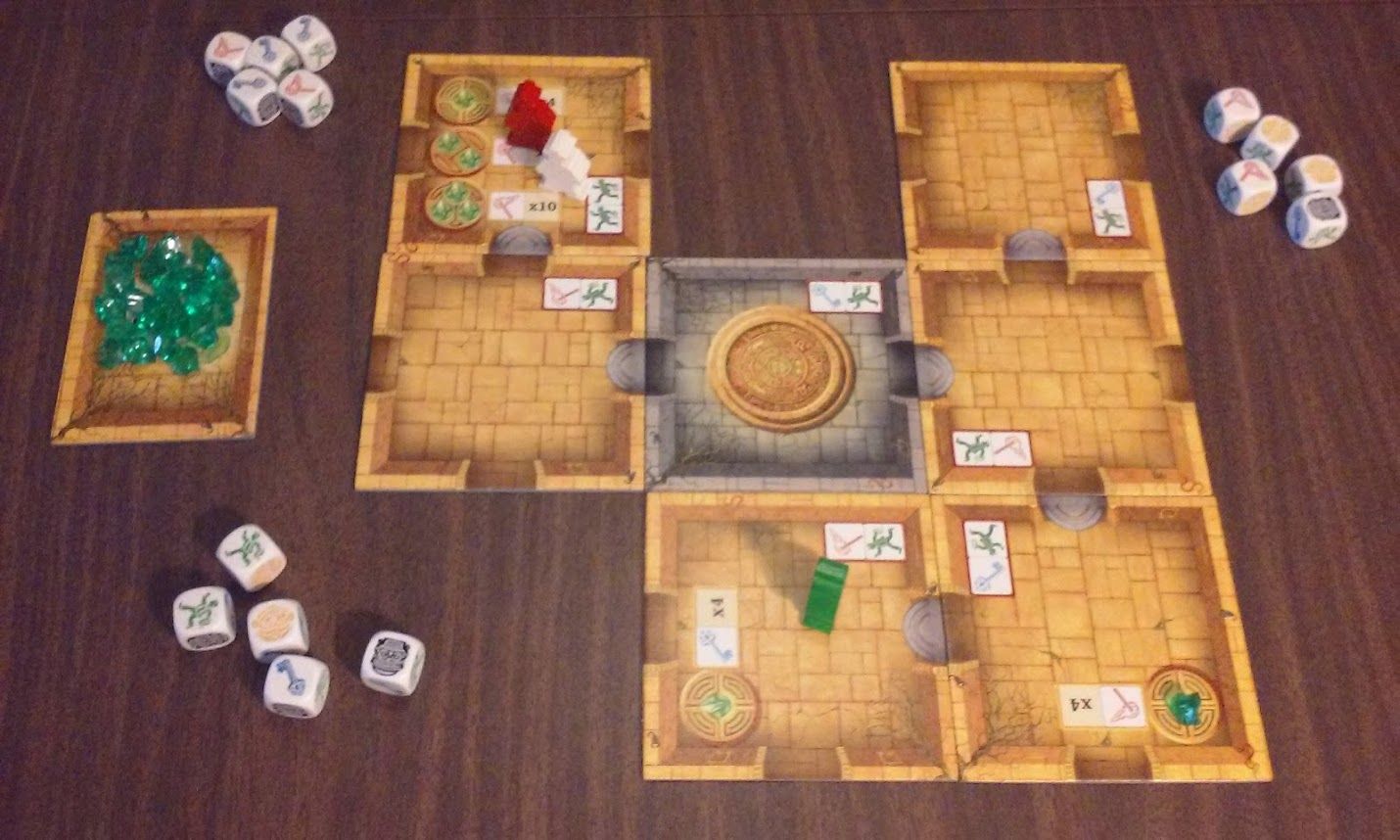
To begin the game, simply start the soundtrack. There will be a few seconds of apprehensive mental preparation before the mysterious narrator announces the start-game trigger: "ESCAPE".
Players will then start frantically rolling and rerolling their dice in order to perform actions. There are unlimited rerolls, and dice can be saved for future use (but they must be rerolled if they are used to perform an action). Each die has five different icons:
As players run around the temple, they’ll also need to be activating crystals. Some chambers have magic gem icons which show how many keys or torches need to be rolled in order to activate them. Players in the same chamber can work together to roll the required number, and once they do they can pull a gem out of the gem depot and place it on the magic icon.
This is important because the number of remaining gems in the gem depot affects how easy it is to escape. Once the exit is found, each player will need to enter that chamber and roll a number of keys equal to the number of remaining gems in the gem depot plus one in order to get out. Once a player escapes, they can give one of their dice to any player still in the temple to help them out.
In addition, twice throughout the game, a gong will sound which signals that it's time for everybody to return to the starting chamber. If a player isn’t able to make it back in time, they lose a die.
If every player escapes before the final gong sounds at the end of the soundtrack (you’ll know it from the enormously stressful auditory build up), the team can rejoice in victory (and survival)! But if even one player doesn’t make it out, then everyone loses.
Escape: The Curse of the Temple accomplishes exactly what it set out to do; it definitely feels like the climax of an Indiana Jones movie. It is ridiculously intense, and it’s a good thing that the game is so short because otherwise I don’t think most people would be able to handle the enormous amount of stress that this game can create.
As a result, this game can get LOUD very easily, especially at the higher player counts. When the soundtrack is booming, the dice rolls never stop, and the players are frantically trying to get their voices heard, don’t be surprised when your neighbor looks at you funny the next day... Some people (including me) will love this aspect, others not so much.
Another thing I love about this game is the sense of comradery that naturally emerges. Players will often make plans to work together on the fly, rescue each other, and sometimes just sit, stare, and pray for someone else’s dice rolls to work out. Those moments are priceless, and there’s nothing more satisfying than the intense final moments of the game when the last person escapes with only seconds to spare.
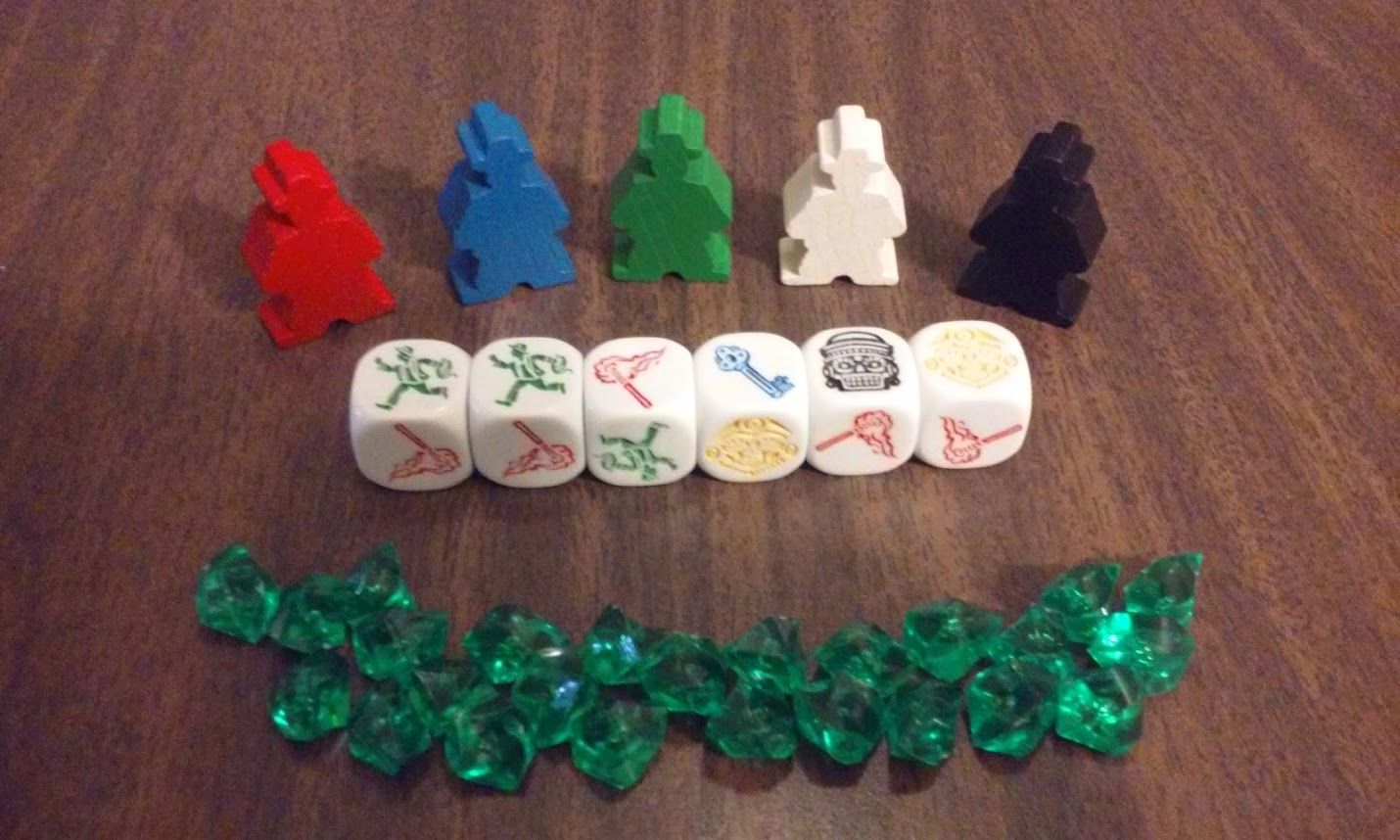
However, even though endings like that are amazing when they happen, the game can also have an anticlimactic ending if the game was either too easy or too hard. Luckily, the difficulty of the game can easily be adjusted by changing the number of gems in the gem depot, but that’s often tough to judge before starting (especially when playing with new players).
This game is pretty easy to learn and teach (although compared to other ten-minute games it isn’t), but it’s not the kind of game that players can learn as they go, thanks to the time constraints and the distractions. It isn’t difficult, but players who have practice will almost certainly outperform those that don’t.
What often happens is, if there are new players, the first game will be a loss. Almost always though, people will want to play again, and that’s a great sign. The mechanics usually click at that point, everyone is up to speed, and the second game is where the real fun starts. Since the game is so short, that’s totally reasonable.
Perhaps the biggest issue with this design is its replayability. The order that the chamber tiles come out changes each game, but that isn’t really enough to change the core experience. Once you play the game a couple of times, you’ve pretty much experienced the entire game. The included modules (which I’ll go over later) definitely help with this problem, but it’s there nonetheless.
All the components feel great, and the art is very fitting. I especially enjoy the plastic green gems, something about that shape is so satisfying. I’m glad they chose to make the chamber tiles so large because it makes it easier to see the visual indicators, there’s not as much hand collision with other players, and it makes the temple seem much more epic.
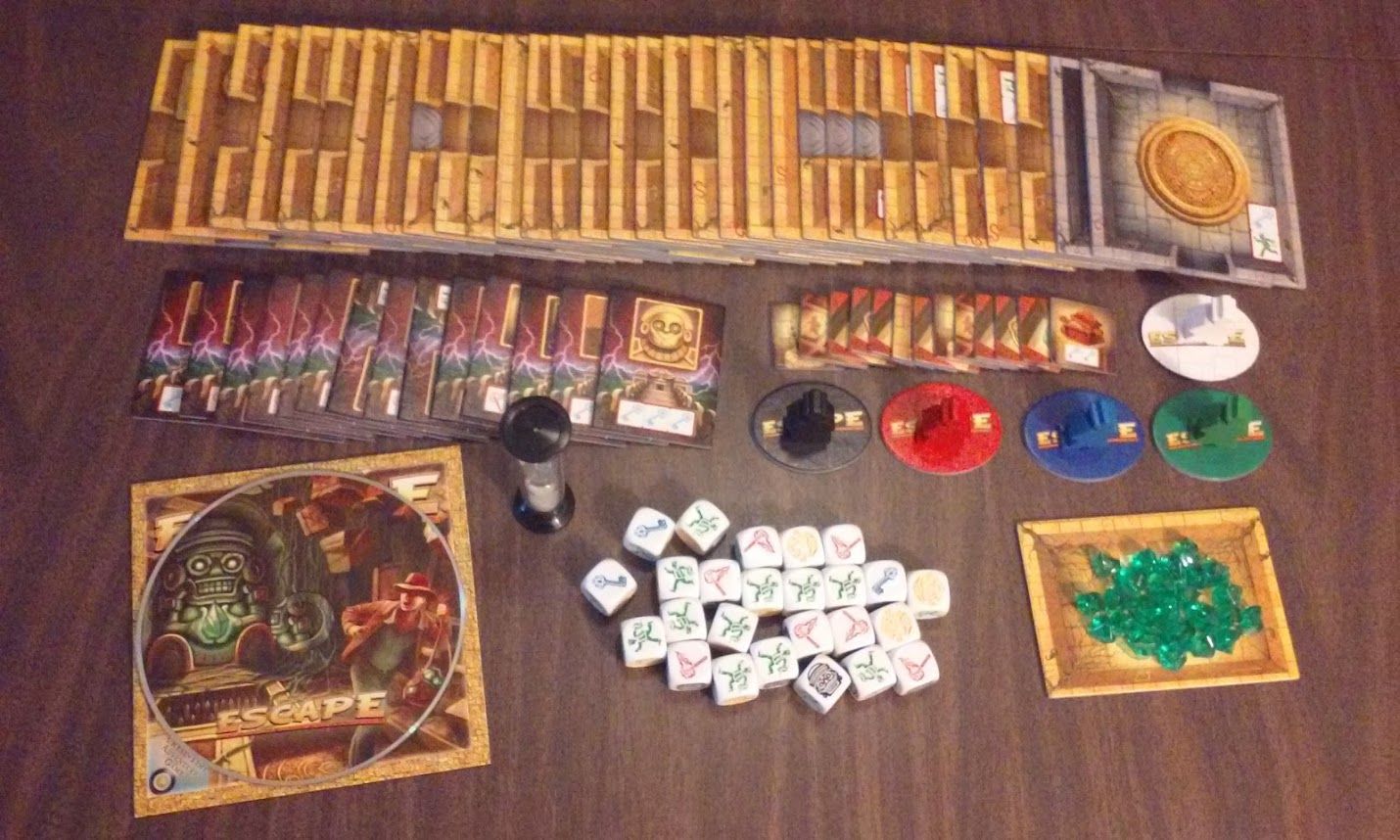
The soundtrack is a fantastic inclusion, and it almost single-handedly makes playing this game worthwhile. Some might suspect that it’s gimmicky, but it adds so much. In the same way that a great movie soundtrack is essential to the viewing experience, this music sets the tone perfectly. It makes me wish more games had soundtracks.
This version of the game also comes with two optional modules that can be used either together or separately. The first one introduces a deck of curse tiles that players must draw when they discover certain chambers. Players that draw curses are handicapped in some way until they are able to roll a certain dice combination. These curses range from not being able to talk, to losing a dice, to having to use only one hand.
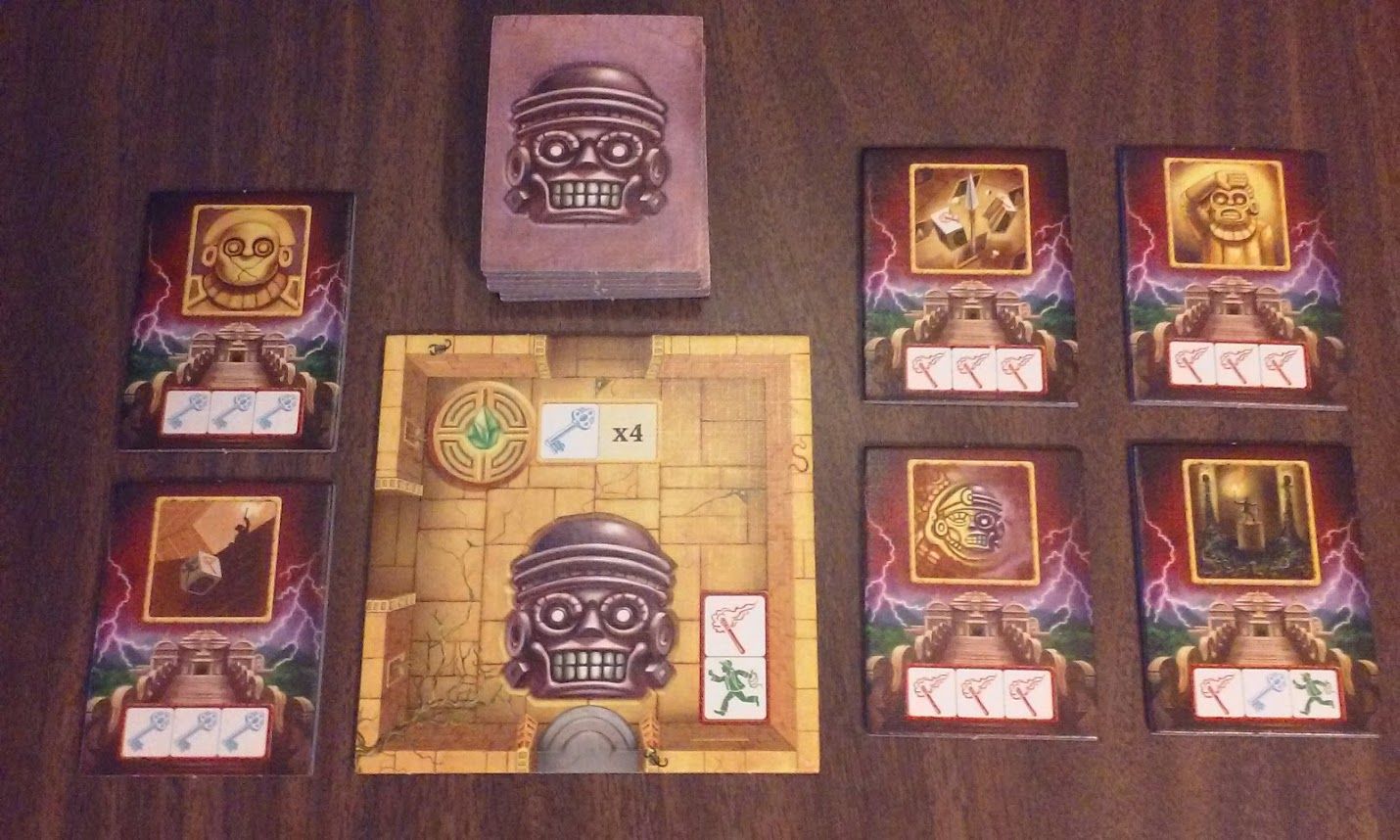
The other module is a deck of treasure tiles which players can claim when they roll keys in certain chambers. These give players special benefits such as extra doors between rooms, extra keys or torches, or the ability to claim extra gems.
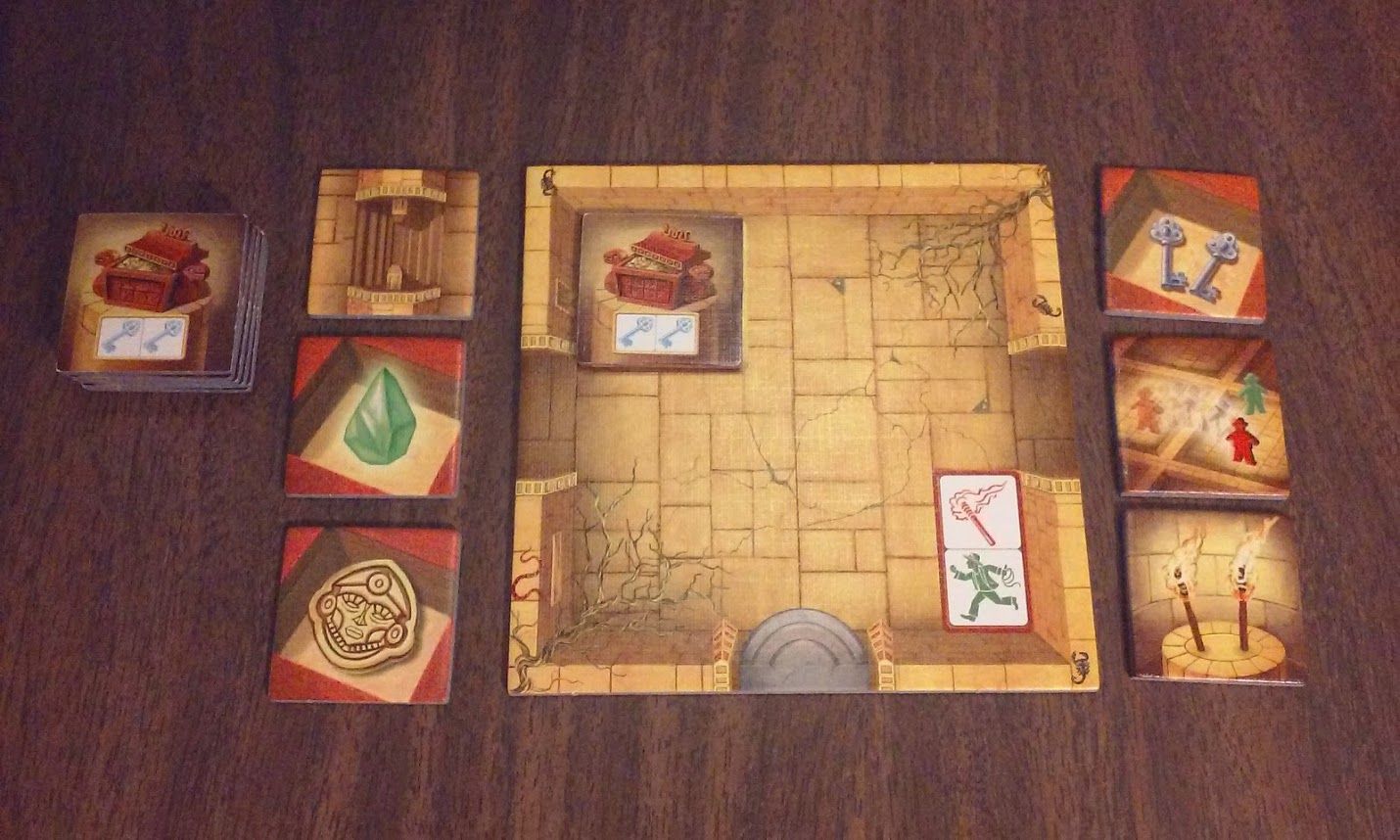
These modules are a great addition to the game (once everyone knows how to play). The curses add entertaining variety and challenge while the treasures give players additional options. This is another great way to scale the difficulty as well.
The only complaint I have about these modules is that it’s difficult to remember what each of them do. There are several different effects to remember, and since there’s no text on the tiles, the only way to know what they do is to look at the rulebook. It’s a bit unreasonable to expect every player to remember ten different effects before the game starts. Overall though, these modules are a lot of fun.
Usually I don’t like cooperative games much, but this one is truly impressive. The game is only ten minutes long, but it crams so much interactive fun into that short timeframe that it feels just as fulfilling as any other game. It requires complete focus and engagement the entire time; during these ten minutes there’s no time to think about anything besides the game, and that’s pretty special.
It’s not necessarily a game that I want to play every game night, but it’s creative, unique, and it stands out as a gem in my collection that I love showing to new people. If you’re looking for a relentlessly exciting group experience, give this game a try. You won’t be disappointed (and even if you are, it’s only ten minutes!).





Thanks for reading!